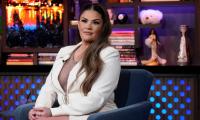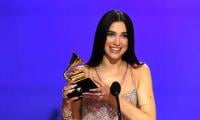On September 5, 2021, an article titled ‘Language beyond Politics’ written by an experienced teacher Syed Nomanul Haq appeared in Dawn. Though many of the points raised by the learned professor are valid, several of his contentions need serious reconsideration. Agreed that Urdu is now more familiar in Pakistan than it used to be a few decades ago; however, it has never attained the status of ‘mother tongue’ for the majority of children in Pakistan.
The cited article alludes to Noam Chomsky for the latest focus on the significance of teaching the mother tongue to children but what it argues afterwards is opposed to what Chomsky says as he opposes the theory of language acquisition – ‘behaviorism’. Behaviorists assert that the behavior of an organism can be based solely on observing its interaction with the environment. They assert that every child is blessed by birth with general learning abilities but not with any language-specific knowledge; and the linguistic behavior of a child is molded, or externally reinforced, by adult speakers. Here ‘imitation’ plays an important role and children are viewed as imitating speech by others.
Opposed to the behaviorist position is an alternative approach proposed by Chomsky who asserts that language acquisition cannot be understood without positing a linguistically specific system of principles and parameters that every healthy child is genetically endowed with. This he also refers to as Universal Grammar or as the Language Acquisition Device (LAD).
This is not to say that children’s environment plays no role at all in acquiring their native language. What Mr Nomanul Haq accounts for in Urdu is the environment which Chomsky refers to as ‘source of data’, external sources and means which shape the language environment of the child.
According to Chomsky, a theory of language acquisition positioned by behaviorist principles has many shortcomings because of many reasons. He claims that the “linguistic data available to the child are not sufficient for a child to inductively arrive at a grammar capable of producing well-formed novel expressions yet at the same time not producing ill-formed expressions”. In addition, language development in children is a spontaneous process and does not require conscious instruction or reinforcement on the part of adults. Children are able to develop very complex linguistic systems in a very short span of time, from four to five years. They move from babbling to one-word and then to multi-word stages.
Another important approach in the behaviorist theory of language acquisition is imitation, which in fact seems to play little role in the mastery of language by a child. There is ample research done in this regard which suggests how children develop their own system of ‘language’.
According to the Chomskyan Universal Grammar (UG), every human being is born with an innate capacity of language, and all languages have a similar level of complexity and share general abstract properties. All human languages can be analysed as systems consisting of discrete structural units with rules combining those units in various ways. Even though languages differ superficially, they all reflect the general properties of a common linguistic system.
In other words, the capacity to acquire language is a capacity of the human species as a whole. This is, of course, true – yet human language evolved into many ‘languages’ because of divergence, convergence and contacts’; and now we have more than 7000 different languages in the world. Though all these languages share the same ‘general linguistic system’, they differ in particulars. These ‘particulars’ have divided the languages into different phylogenetic groups.
According to Ethnologue, there are about 147 major language families/phyla in the world. Under each major family there are many sub-groups. In Pakistan, we currently have 66 languages and their varieties. These languages fall under different families. The majority of Pakistani languages such as Urdu, Punjabi, Balochi, Pashto, Sindhi, Saraiki, and the Dardic languages of northern Pakistan fall under the major family of Indo-European whereas Brahvi is a Dravidian language, Balti a Sino-Tibetan and Burushaski a Language Isolate. Among the Indo-European languages of Pakistan, we have two main phylogenetic sub-groups: the Indo-Aryan and Iranian. Punjabi, Urdu, Sindhi, and the Dardic languages are Indo-Aryan while Pashto, Balochi, Dari and Wakhi are Iranian. These languages differ from each other in many linguistic characteristics. There are sounds in Pashto, Balochi, Punjabi, in the Dardic languages, Sindhi and Burushaski which do not appear in Urdu.
People in favour of Urdu often forget that it is a new language born out of old Hindi but with more Arabic lexicon, and now a more Arabised cultural context too. Still Urdu and Hindi are more than 60 percent similar lexically. This is the reason Urdu has been popularised by Hindi-dominated Bollywood.
One wonders how Urdu could be the ‘mother tongue’ of a Pashtun child in Khyber Pakhtunkhwa where the majority of children has learned Pashto from their very birth and Urdu is familiar for them to some extent, through the wider media, but they are still not comfortable in it. Even many adult Pashtuns living in northern Pakistan feel linguistically disadvantaged while speaking Urdu. The same is true for the majority of children in many parts of Sindh, in Balochistan and in rural Punjab.
A mother tongue is one which a child begins to learn from her/his very birth, and as per the Chomskyan innate theory, it is in the child’s genes. Urdu could be the ‘second language’ for many children in Pakistan, even though in provinces like Khyber Pakhtunkhwa and Balochistan, the second languages are Pashto and Balochi in the majority of cases.
Another argument Mr Haq gives is that ‘Pakistan hardly has mutually isolated linguistic pockets’. This argument seems to have been inspired from a specific part of the landscape of Karachi. Apart from some elite urban centers in the metropolises, Pakistan is naturally divided along linguistic lines. We have very well-defined linguistic pockets separated geographically not only on the provincial level but within each province as well.
For example, within Khyber Pakhtunkhwa we have 25 languages other than Pashto and these language communities are natively confined to separate geographical pockets where these languages could be taught in the primary schools. For instance, the Torwali language is spoken in its native land in upper Swat which is geographically well defined, and it could be easily introduced in schools here where most children speak it as their mother language. The argument that the language communities in Pakistan are not geographically defined is an excuse to further ignore these languages. Even in cities like Karachi, the majority of the Pashto and Balochi speaking people live in specified areas.
There are few educated youth and adults who can write or read Urdu; and if we impose this milieu on the entire populations of Pakistan we, as the norm is, resort to the same exclusivist practice where very few are highly educated in English followed by the few educated well in Urdu. It means we exclude the rest of the people by making Urdu either the sole national language or by making it a ‘second mother tongue’ of Pakistani children.
Some of our educationists and writers in Pakistan do not see the ‘other’ languages as having much value because they are not familiar with the literature and indigenous wisdom in these languages. They are unintentionally victims of the linguicism which has been directly or indirectly operative in Pakistan since its birth.
Urdu is not the ‘mother tongue’ of the majority of Pakistani children. It is, of course, our language of wider communication and we love it for the literature produced in it. Speaking up for other languages does not mean erasing Urdu; rather it means adding resources to it. We need to look at our linguistic diversity through this prism. And as the bulk of theory and practical research around the world suggests, these languages should be taught at primary schools. A trilingual model – mother tongue, Urdu and English – is a better way to educate our children in their early and primary education.
The writer heads an independent organisation dealing with education and development in Swat.
Email: ztorwali@gmail.com
A woman walks past a building of the International Monetary Fund. — AFP/FileThe annual and spring meetings of the...
Late Benazir Bhutto's daughter Asifa Bhutto Zardari addresses the Christian community in Bihar Colony on January 23,...
Representational image. — PexelsWater is an important scarce natural resource that is required for several everyday...
Pakistani employees of online marketplace company Kaymu at work in Karachi. — AFP/FileThe true spirit of development...
India uses Afghanistan as a backstage area to carry out terrorist attacks against Pakistan
Another report by the Pakistan Institute of Peace Studies states that 78 per cent of attacks have been carried out by...







